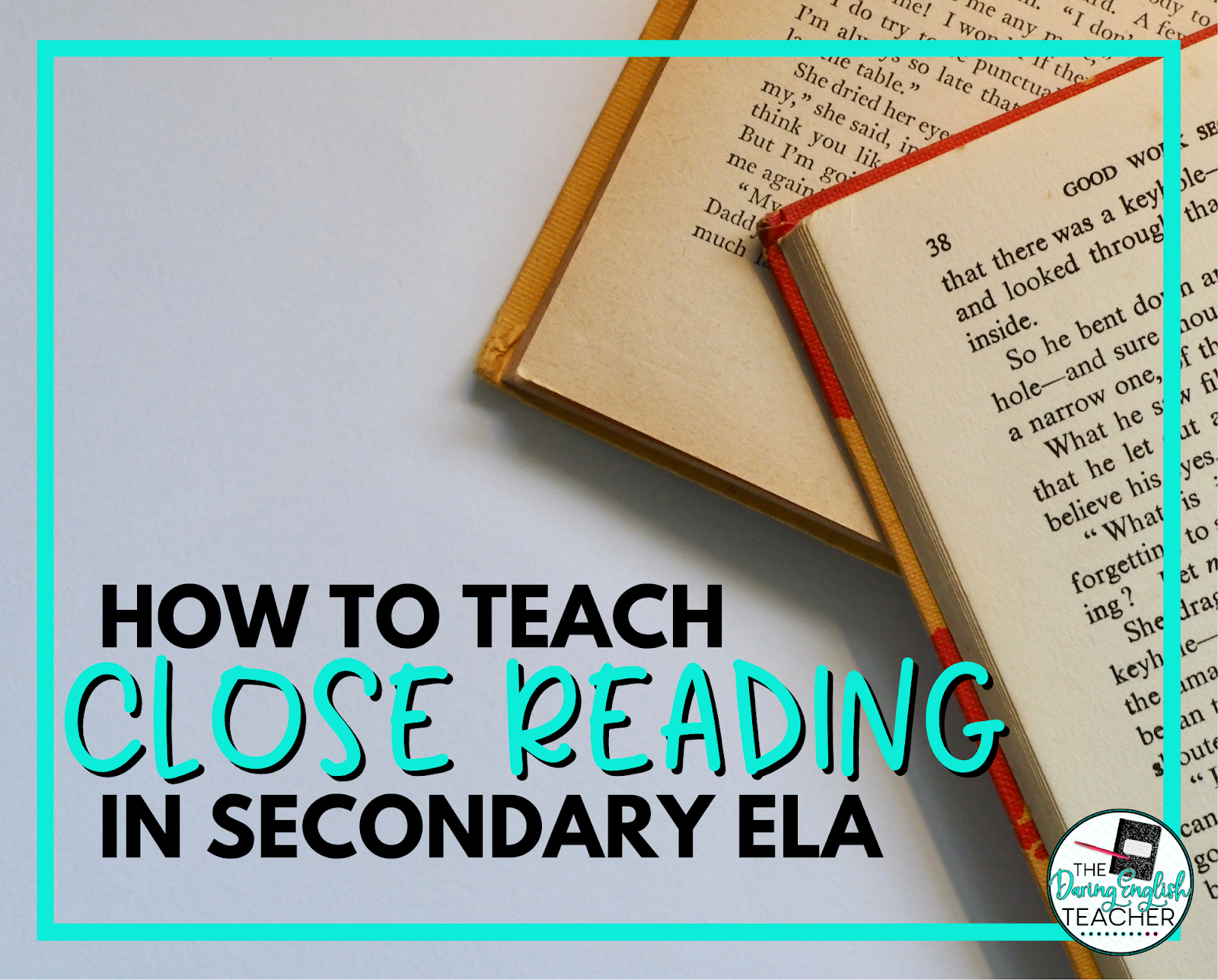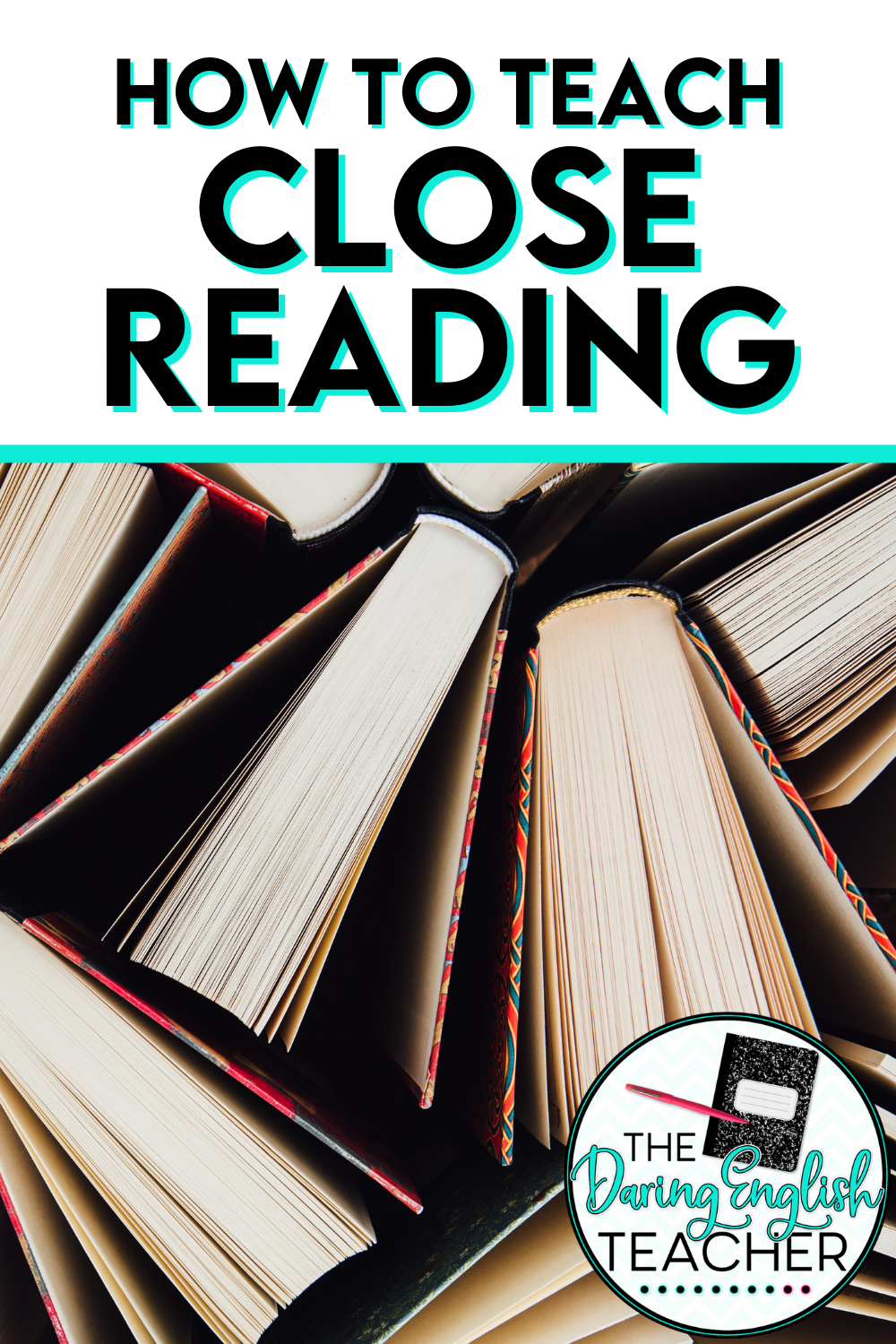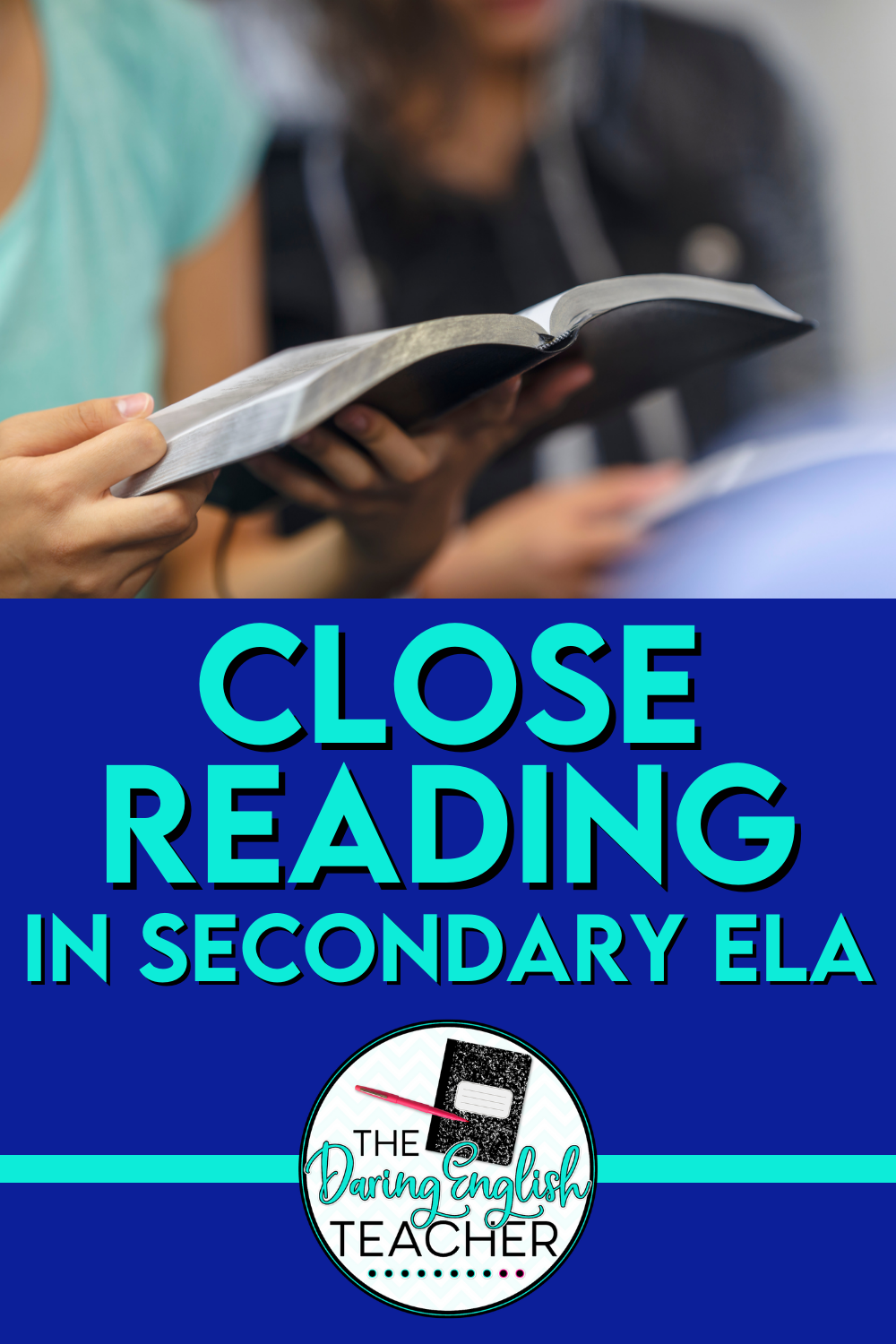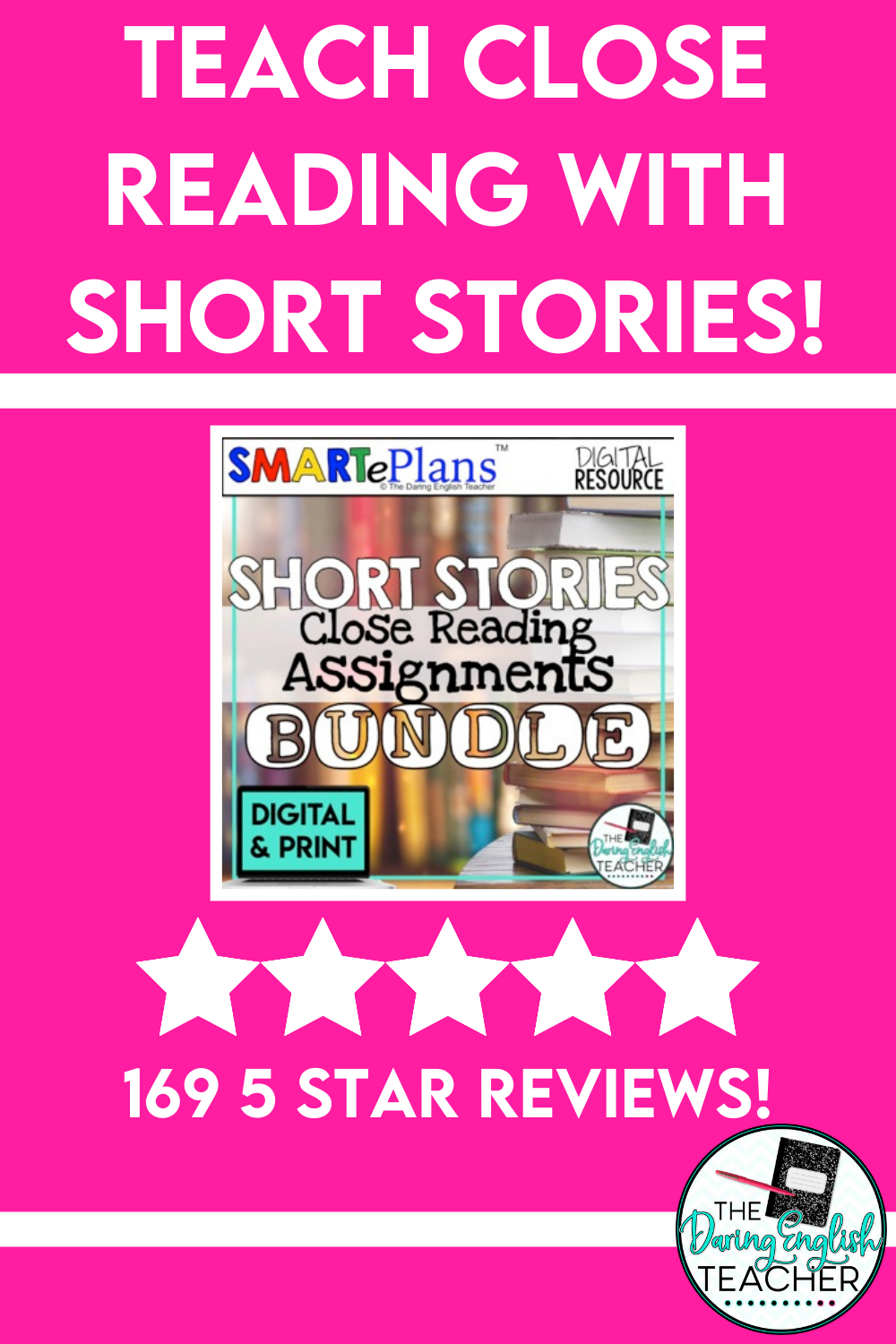It’s not the most popular activity in my classroom, but I believe teaching close reading is a vital skill for my students to feel comfortable and confident in their ability to closely read, understand, and analyze a text. If you’re looking to bring your students to the next level in reading comprehension and analysis, read on for tips and tricks.
What is close reading?
First, it’s important to know that close reading is not a summary of the main points and it’s not a personal response. It’s actually more in-depth than that. When you close read, you should be focused on analysis and interpretation. Students should pick apart the work. This is the time to uncover layers, make inferences, and look for specific textual evidence.
It’s more than a reader response. It is understanding what the author is doing. Why were these words chosen? Why described in this way? Why is this interesting (or not)? Notice that, while it is important that students acknowledge the need for tapping into prior knowledge and their own interests, they should not be focused on just their personal responses.
Why learn about close reading?
Our brains are muscles that need flexing and a bit of a challenge. Close reading helps students learn to find deeper meanings in a text. I honestly believe it is one of those “life-long skills” that students can use post-graduation. It is important to read with a critical eye. Close reading allows students to develop precise interpretations and deeper understanding. It also comes in handy for college readiness (though it certainly isn’t the only reason to learn).
How to teach close reading?
When we go about a workout for the first time, it can be tough. There’s resistance. It probably doesn’t look pretty. Students will need to practice, practice, practice with close reading. Since close reading as a whole really means looking at so many different parts of the whole, you can begin by looking at specific close reading questions.
For example, focus on vocab and diction. Look for the most important words and how they relate to each other. Ask your students to find what phrases appear repeatedly. What words seem odd or out-of-place? Are there double meanings? Are there different ways to read and interpret the text?
You can also look for patterns. Are there symbols repeated? Is a pattern established? Did the author build on one overall idea or is the structure more inferred? You can establish if the author seems valid, or they can identify in what areas they should have improved the writing.
I think the best bit of advice is to know you need to make close reading a habit so students learn through exposure. Always model and set a purpose for reading. Have students focus on connections and not worry about mistakes (in fact, I think “mistakes” are great for teaching students to explain their reasoning, interpretations and discuss finding textual evidence).
I have several close reading activities available in my store that are perfect for introducing close reading, practicing, or setting up as sub plans. This bundle has 14 resources (including distance learning options) which can also be purchased separately.
A great way to include close reading in the classroom is to incorporate the gradual release method. First, complete a small passage together as whole class, then release students in small groups to work together on this task, and after several rounds of collaborative close reading, students should then be ready to tackle the challenge on their own.






One Comment
As much as close reading increases certain skills, doesn’t the student miss the main idea by focusing on details?